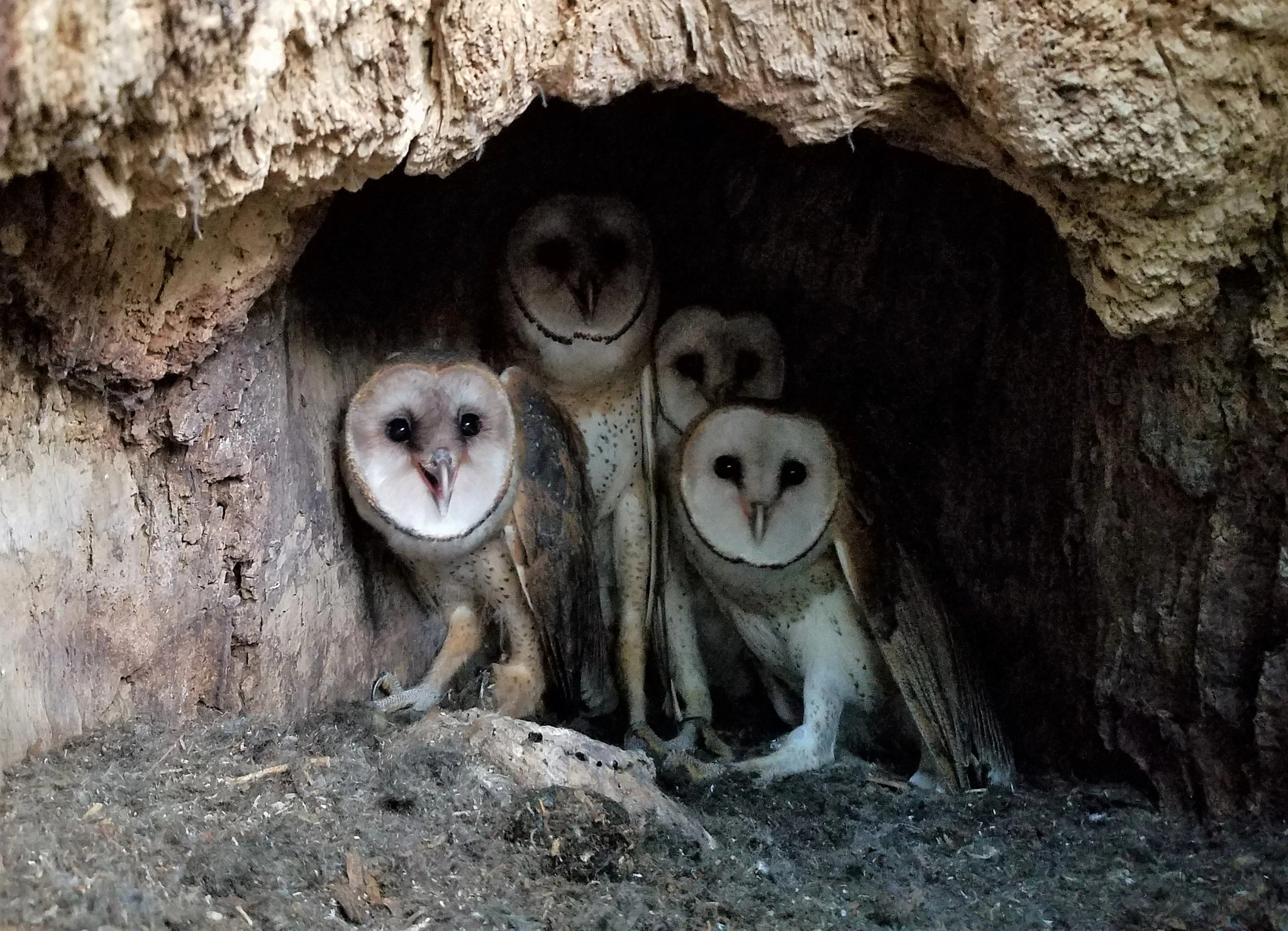Contact: Ryan Brady, DNR Conservation Biologist
Ryan.Brady@wisconsin.gov or 715-685-8585
First Barn Owl Nest Documented In Wisconsin In 20+ Years
 Rare barn owl nest located in Wisconsin for the first time in more than 20 years.
Photo credit: Karla Bloem
Rare barn owl nest located in Wisconsin for the first time in more than 20 years.
Photo credit: Karla Bloem
MADISON, Wis. – The Wisconsin Department of Natural Resources (DNR) reports a rare barn owl nest was documented in Wisconsin for the first time in more than 20 years.
The nest was spotted in September after a young barn owl fell out of a dead tree in a La Crosse resident’s backyard and was picked up by the Coulee Region Humane Society from Onalaska.
Karla Bloem, executive director of the International Owl Center in Houston, Minnesota visited the site to investigate. Bloem put a camera scope into the tree cavity and found a pair of barn owls and three owlets.
In early October, the young owl was returned to the nest in healthy condition. The adults and their young remained near the nest site at least through the end of the month.
“This is an exciting development for Wisconsin as this nest could have easily gone undetected,” said Ryan Brady, DNR Conservation Biologist and Bird Monitoring Coordinator. “Kudos to the staff at Coulee Region Humane, Karla from the International Owl Center for diligent follow-up and the homeowners who provided a habitat to foster this historic nest!”
Although there’s been an uptick in barn owl sightings in Wisconsin and other Upper Midwestern states, and has been speculated that a few may be nesting now in southern Wisconsin, this is the first time in more than two decades a nest has been confirmed.
Barn owls typically nest and roost in tree cavities, abandoned barns and buildings. They require large areas of open land to hunt and can be spotted flying low at night, hunting small rodents mostly by sound.
Barn owls can be identified by their iconic, white heart-shaped face, which lacks the ear tufts seen in other familiar owls. Their head, back and upper wings are a mix of buff and gray while their face, body and underwings are white.
Barn owls are known for their high-pitched scream. However, identifying this rare species by sound alone can be difficult because of the similarities to the “begging” call of a young great horned owl, a far more common species.
“Ninety-nine percent of the barn owl reports we get are young great horned owls,” said Brady. “If you think you hear a barn owl, try to record the sound with your phone or other device.”
Report barn owl sightings to Wisconsin eBird or by using the DNR’s rare species reporting form.
The Return Of The Barn Owl
Barn owls are one of the most widespread birds in the world – found on all continents except Antarctica – but have always been uncommon in Wisconsin due to the species' more southern range. Numbers in the state had declined by the 1980s and the species was put on the state endangered species list.
Only three barn owl nests were detected during the first Wisconsin Breeding Bird Atlas field survey from 1995 to 2000, the last in Grant County in 1999. Sightings were few and no nests were detected for many years, leading the DNR to remove the barn owl from the endangered species list in 2014 for a lack of records.
Soon after, nest box programs that help maintain critical nesting habitat in Iowa, Illinois and Indiana began to see a slight increase in barn owls. As more barn owls were produced, some moved into Wisconsin and sightings started to pick up locally. A pair of barn owls, but no nest, was found in Iowa County during the second Wisconsin Breeding Bird Atlas field survey conducted from 2015-2019.
In addition to nest box programs in surrounding states, Brady explains that warmer winters are potentially allowing more barn owls to survive in northern states again.
If an annual breeding population is found in the state, barn owls could warrant consideration for Wisconsin’s endangered and threatened species list.
Wisconsinites can support the barn owl population by reporting observations, leaving up dead trees, when safe to do so, and refraining from using pesticides and rodenticides.

